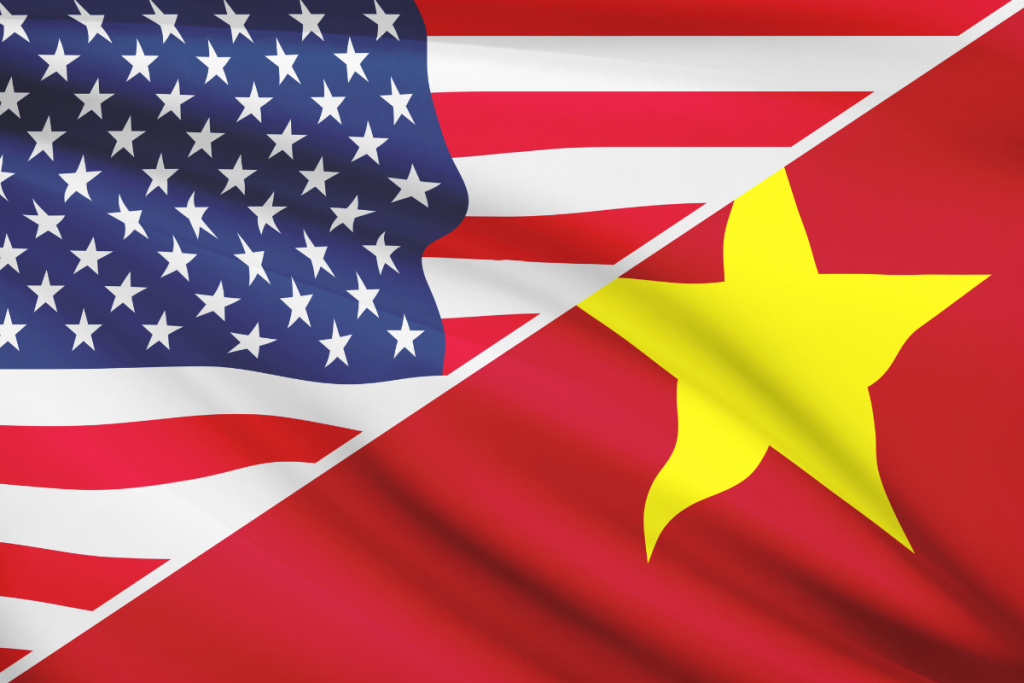Vietnam has become one of the few countries to secure a tariff agreement with the U.S. ahead of the July 9 expiration of a temporary pause on sweeping trade duties. The new deal sets a 20% rate on Vietnamese goods while granting U.S. exporters zero-tariff access, marking a key shift in bilateral trade dynamics shaped by Washington’s broader tariff strategy.
Tariff Deal Sets New Terms for Bilateral Trade Flow
The United States and Vietnam have reached a provisional trade agreement that will impose a 20% tariff on Vietnamese exports, down from the 46% rate set to take effect next week. Announced by President Donald Trump on Wednesday, the deal also includes a 40% tariff on transshipped goods routed through Vietnam from other countries. Trump emphasized the enforcement of this provision, though operational details remain unclear.
In return, Vietnam has agreed to eliminate tariffs on U.S. exports, including large-engine vehicles, according to both U.S. and Vietnamese officials. The arrangement resembles earlier limited deals struck with the United Kingdom and China, which offered targeted relief without the structure of a full bilateral trade pact.
Since the onset of U.S. tariffs on Chinese goods in 2018, Vietnam has emerged as a critical manufacturing hub for companies seeking to diversify supply chains. Its exports to the U.S. have surged from under $50 billion in 2018 to $137 billion in 2024, Census Bureau data shows. Meanwhile, U.S. exports to Vietnam rose only modestly, reaching $13 billion last year—leaving a trade gap of $123 billion that has drawn scrutiny in Washington.
U.S. Tightens Pressure as Japan Talks Stall
The U.S.-Vietnam agreement offers short-term certainty, but the broader message is one of selective access. While Vietnam dodged a steeper tariff shock, other countries remain in flux. Japan, for example, appears unlikely to reach a deal before the July 9 deadline. Trump on Tuesday warned that Japanese goods could face tariffs of up to 35%, a jump from the previously announced 24% rate.
Negotiations with Japan have reportedly stalled over U.S. demands for expanded access for car and rice exports. “We thank you very much… and therefore you’ll pay 30%, 35%, or whatever the number is,” Trump told reporters, indicating that no further concessions are expected without significant movement from Tokyo.
Japan’s trade surplus with the U.S. stood at $68 billion in 2024, with Japanese exports to the U.S. totaling $148 billion. Tokyo has acknowledged Trump’s comments but declined to offer details, saying only that talks are ongoing. The hardening U.S. stance signals that absent rapid concessions, other nations may see tariff rates escalate quickly after July 9.
Vietnam’s agreement, meanwhile, leaves unresolved its longstanding requests for recognition as a market economy and fewer controls on high-tech U.S. exports. Still, Hanoi has taken steps to narrow its trade imbalance, including lowering tariffs on American goods and cracking down on potential origin fraud involving Chinese components. Trade officials say the U.S. continues to push Vietnam to reduce Chinese tech content in its re-exports, suggesting compliance will be closely monitored.
Short-Term Certainty, Long-Term Precedent
The Vietnam deal may avert immediate disruption, but it also sets a precedent that could reshape global supply strategy in more subtle ways. By granting tariff exemptions in exchange for targeted concessions, the U.S. is effectively normalizing deal-by-deal trade access, introducing volatility into what were once rules-based systems. For multinational firms, this suggests that compliance, lobbying, and localization strategies may begin to carry as much weight as price or quality in determining market viability.





